Overview of new large telescopes
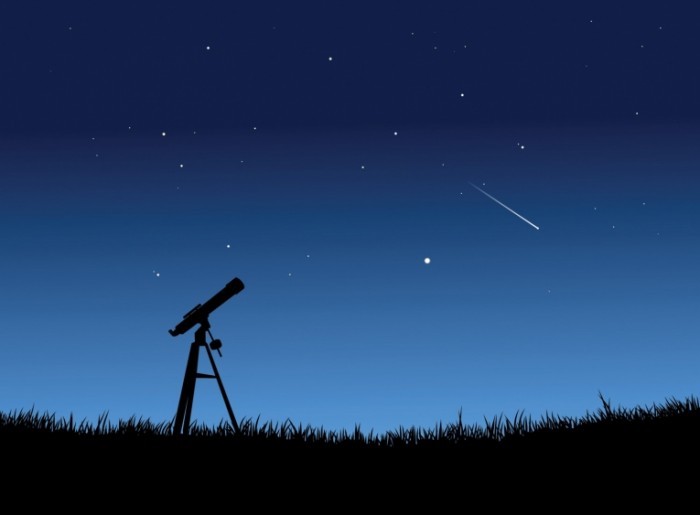
The development of astronomy does not stop and many new telescopes are built around the world for various purposes. A brief description of the most notable projects in this review:
Planets search
Modern telescopes are able to find a planet from another star only if it is very close to a star or very large (looking at the analogue of the Kepler solar system only Saturn and Jupiter would find). To find analogs of the earth from other stars and find out what happened to them, a new generation of space and ground-based telescopes is being created.
')
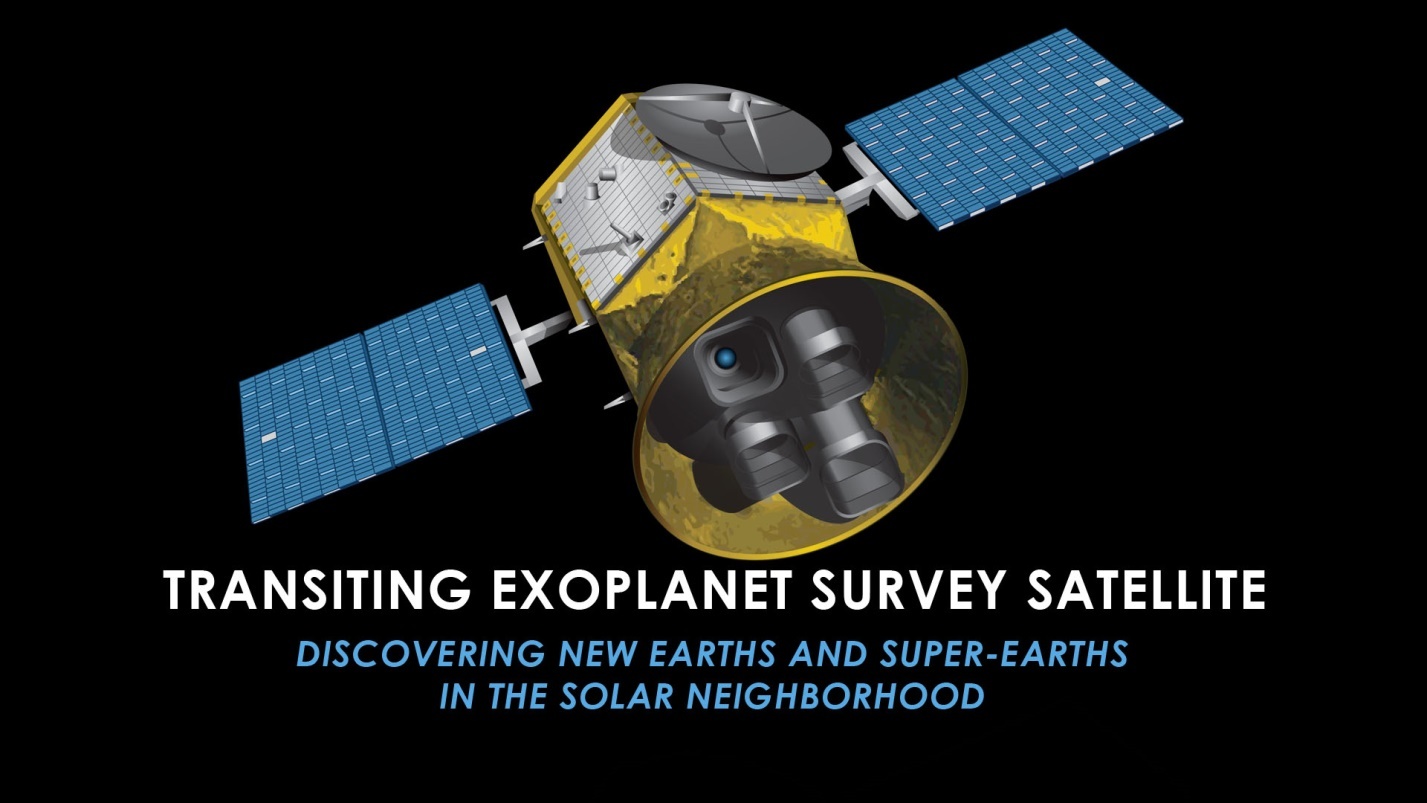
The TESS telescope will be launched in 2017. His task is to search for exoplanets with a favorable outcome, he will find 10,000 new exoplanets 2 times more than found today.
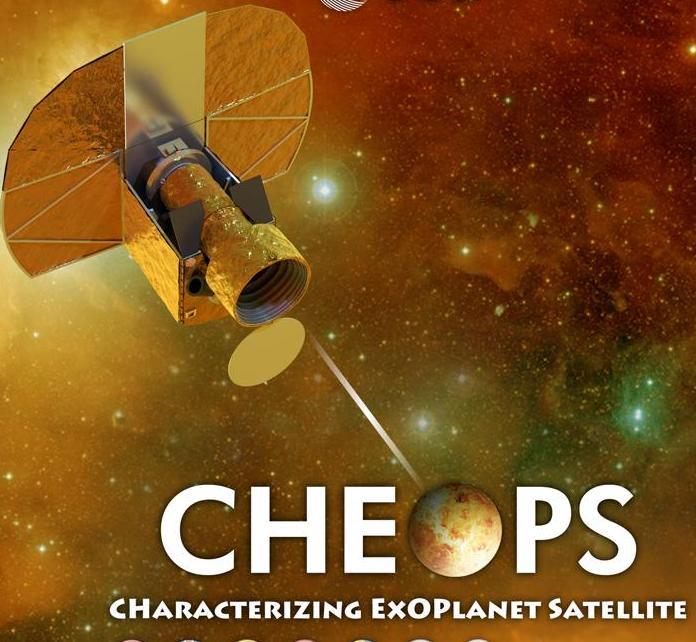
Launched in 2017, the CHEOPS space telescope will search for exoplanets from stars closest to the solar system and study them.

The James Webb Telescope is the successor to Hubble and the future of astronomy. He is the first to be able to find planets the size of Earth and smaller, as well as take photos of even more distant nebulae. The construction of the telescope cost $ 8 billion. It will be sent to space in the autumn of 2018.
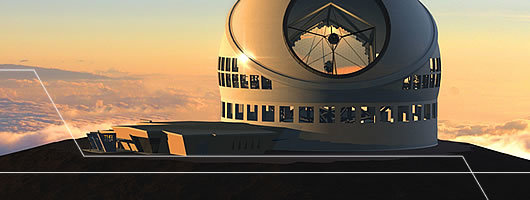
The thirty-meter telescope could be the first of a series of “extremely large telescopes” capable of seeing much further than existing telescopes, but for residents of the Hawaiian islands, the mountain on which it is built is sacred, and they have achieved its cancellation. So now it will be delayed and, at best, built elsewhere.

Chapter 4
The ground giant Magellan telescope will have a resolution of 10 times higher than that of Hubble. It will be fully functional in 2024.
European Extremely Large Telescope (E-ELT)
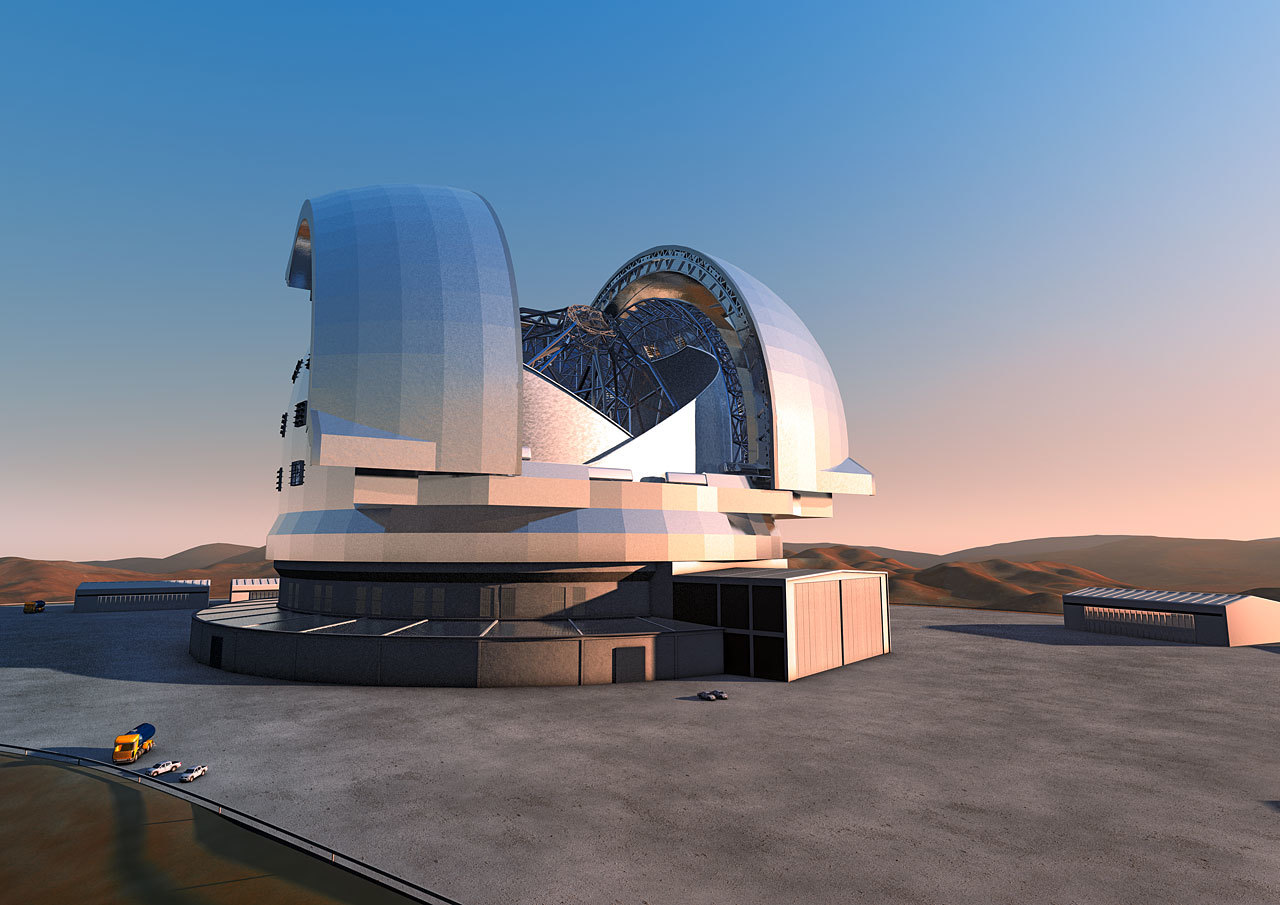
But the largest telescope in the world will be the European Extremely Large Telescope (E-ELT). At best, he will even be able to visually observe exoplanets, so that we can see planets from other stars for the first time. Getting started also - 2024.
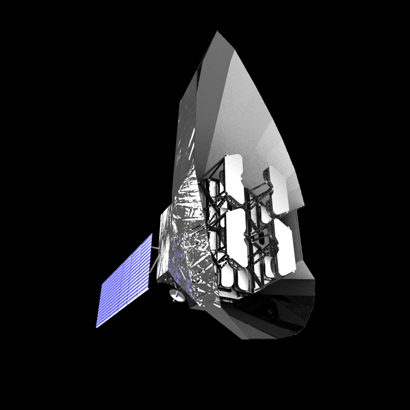
The PLATO telescope will be the heir of James Webb already and launched in the 2020s. His main task, like the rest, will be to find and study exoplanets and he will be able to determine their structure (solid or gas giants)
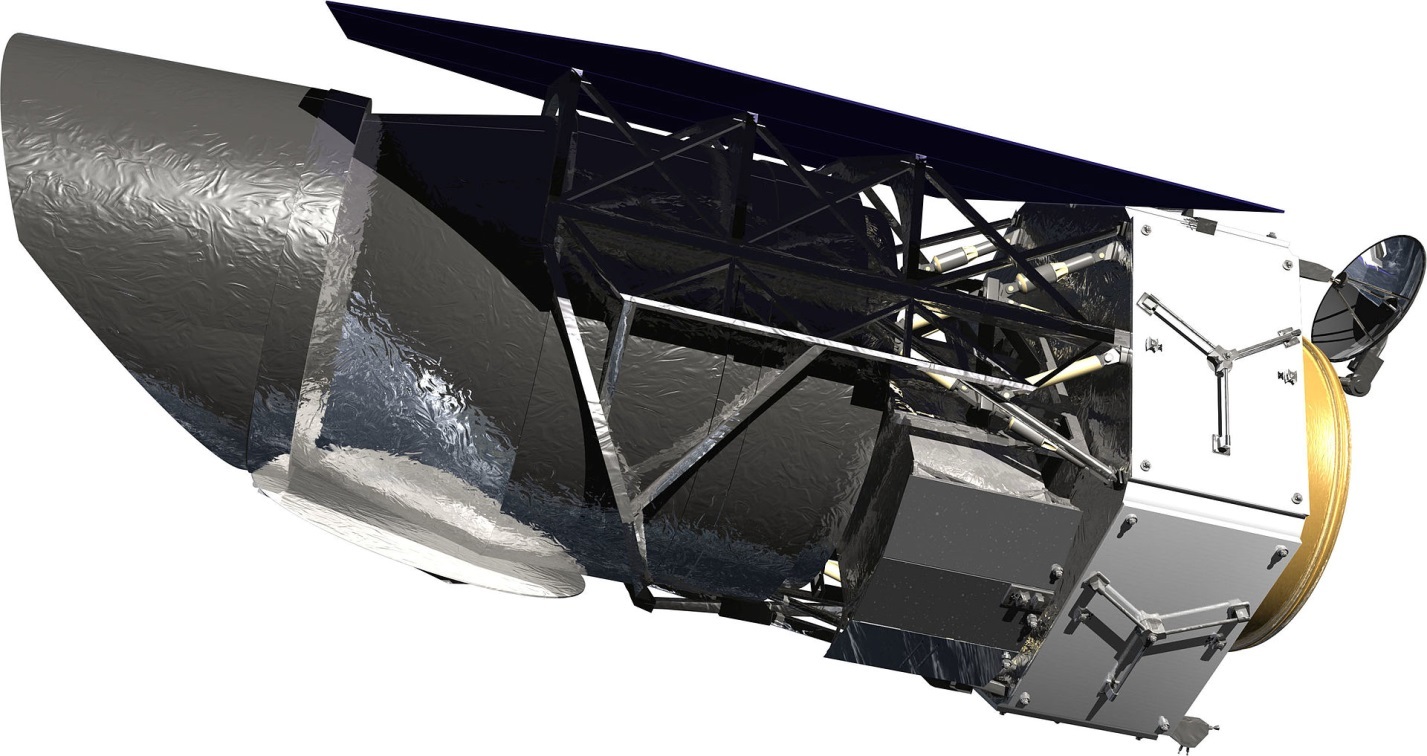
Also planned for the 2020s, the Wfirst telescope will specialize in searching for distant galaxies, but will also be able to find exoplanets and transmit images of the largest of them.
STEP (Search for Terrestrial Exo-Planets)

The Chinese STEP (Search for Terrestrial Exo Planets) telescope will be able to detect earth-like planets at a distance of up to 20 parsecs from the sun. Its launch is expected in the period 2021-2024.
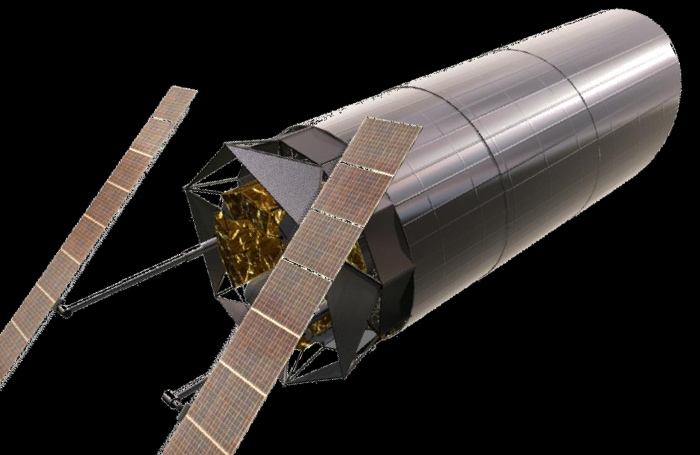
Planned for the second half of the 2020s, the NASA - ATLAST space telescope will search for biomarkers in the galaxy indicating the presence of life (oxygen, ozone, water)
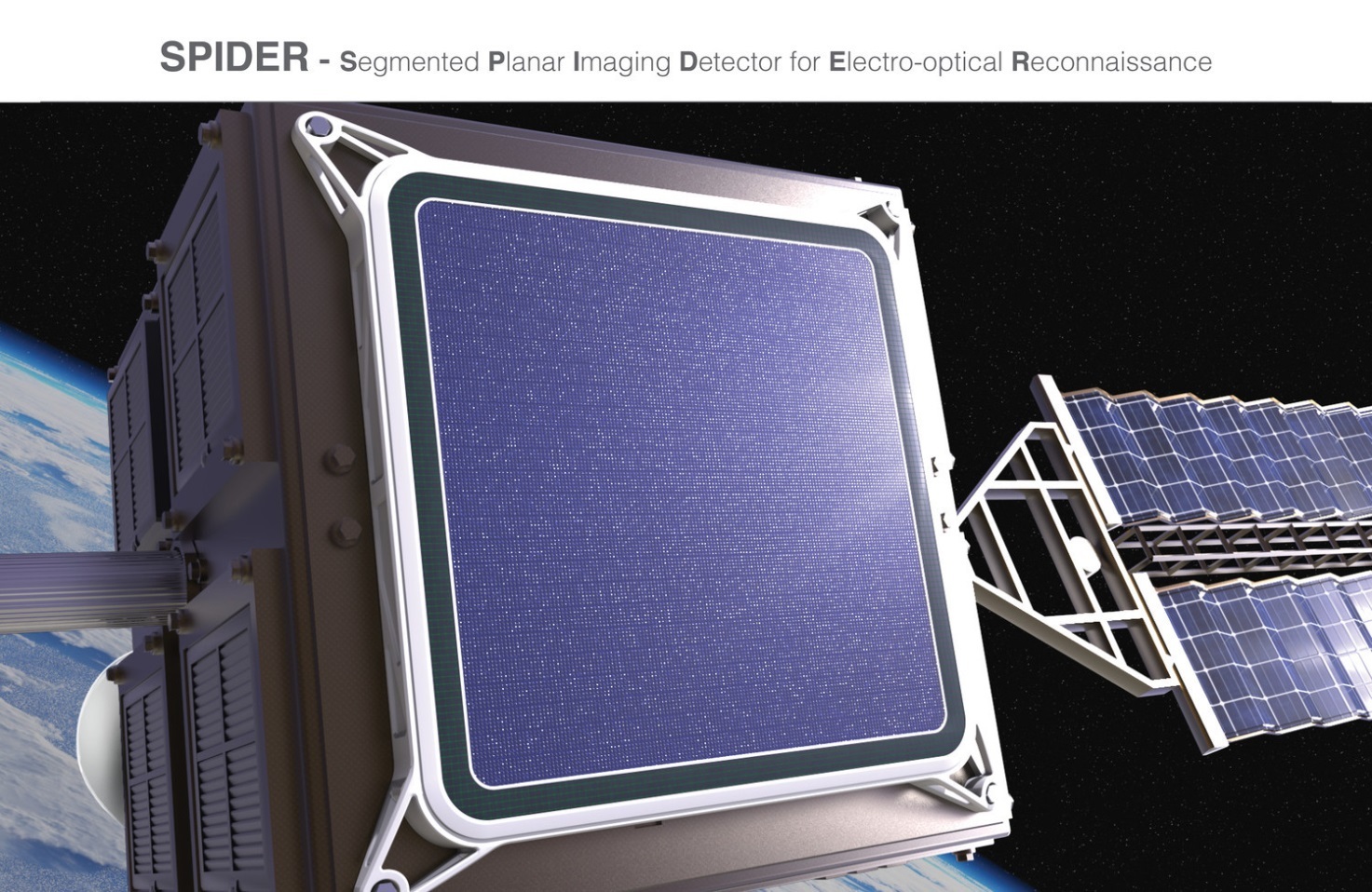
Lockheed Martin is developing a new telescope - SPIDER. It must collect light in a different way and this will make it possible to make an effective telescope of a smaller size, because if you look at previous projects, they become more and more gigantic.
In the meantime, new telescopes to search for exoplanets have not yet been launched and are not built, all we have today are 3 observational projects. More about them in the planets search table:
Planet Search Table
Kepler K2 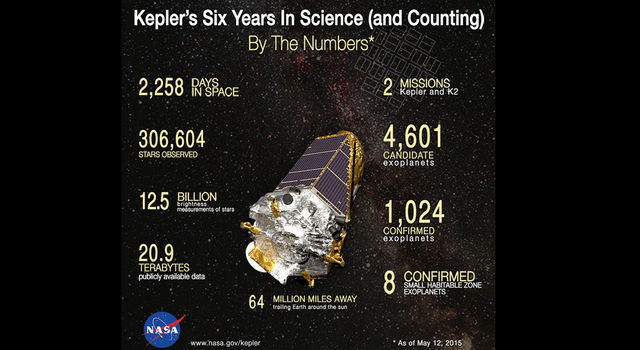 | In 2013, the Kepler telescope - the most effective telescope in the search for exoplanets went down, and many publications wrote something like an obituary for it. But after launching the K2 mission in 2014, it turned out that the telescope was still quite capable of finding planets. From April 2016, he will begin new observations, and researchers expect to find from 80 to 120 new exoplanets. 1 2 |
Menerva 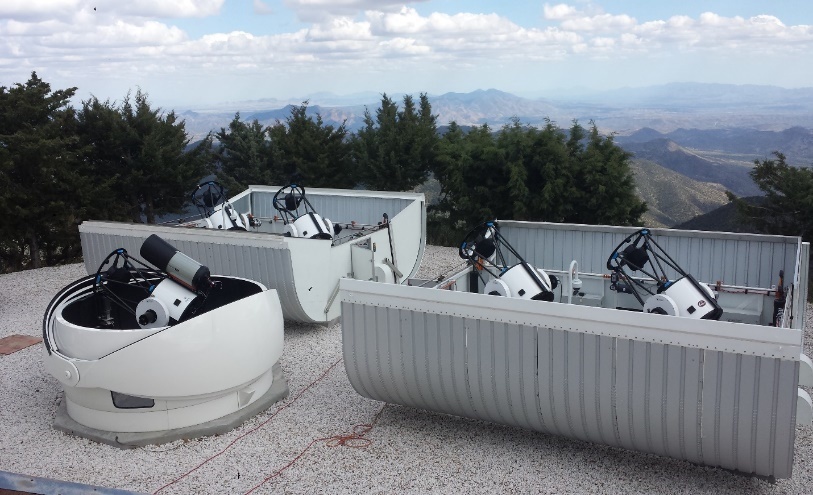 | Very cheap compared to analogs, the Harvard University telescope - Menerva in December 2015 embarked on its mission to search for exoplanets from red dwarfs, adjacent to the solar system. Astronomers expect to find at least 10-20 planets. 3 4 |
Pale red dot 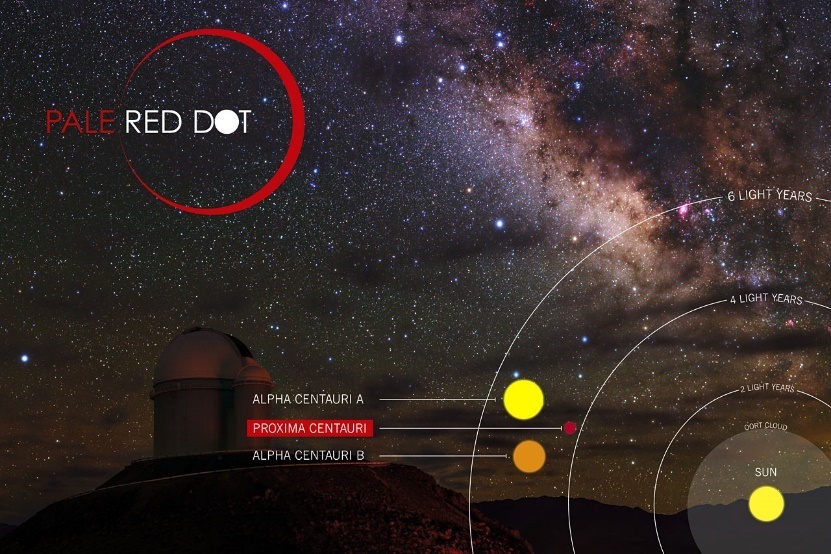 | It is not clear whether the planet rotates around the star of Alpha Centauria (the nearest neighbor of the solar system). This riddle does not let astronomers go, and some of them organized the Pale red dot project to carefully observe and clarify this issue (if there is a planet, then the temperature is still 1000 degrees). Observations have already been completed, the results in the form of a scientific article will be at the end of 2016. 5 6 |
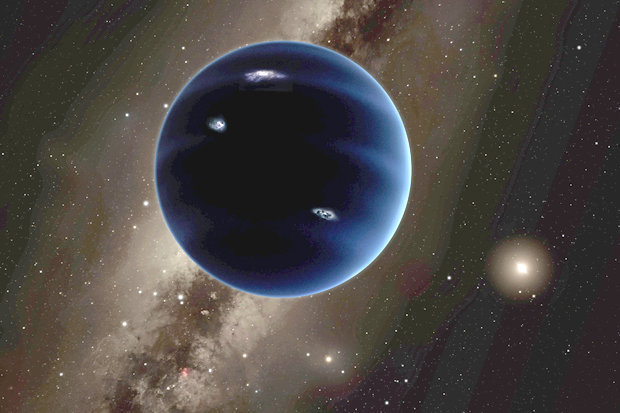
Planet 9 (or Planet X) was suddenly discovered by indirect methods at the beginning of 2016. The first new planet of the solar system for more than 150 years, but to observe it through a telescope and thereby confirm its existence, it may take up to 5 years of searching.
Search for stars
In the galaxy, the milky way from 200 to 400 billion stars and astronomers are trying to create a map or directory of at least the nearest stars to us.
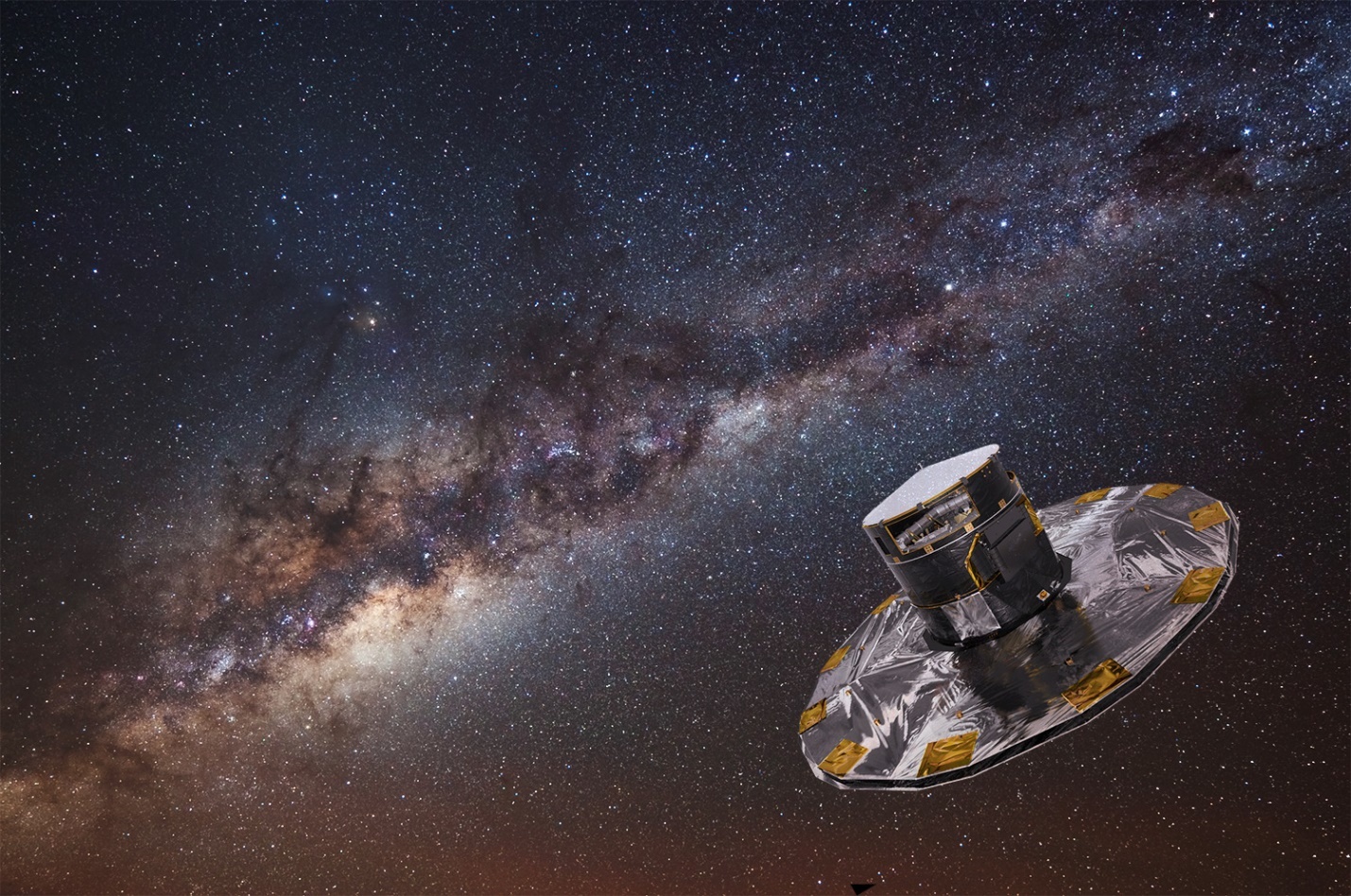
GAIA Space Telescope will map the 1 billion stars closest to us. The publication of the first catalog is scheduled for the summer of 2016.
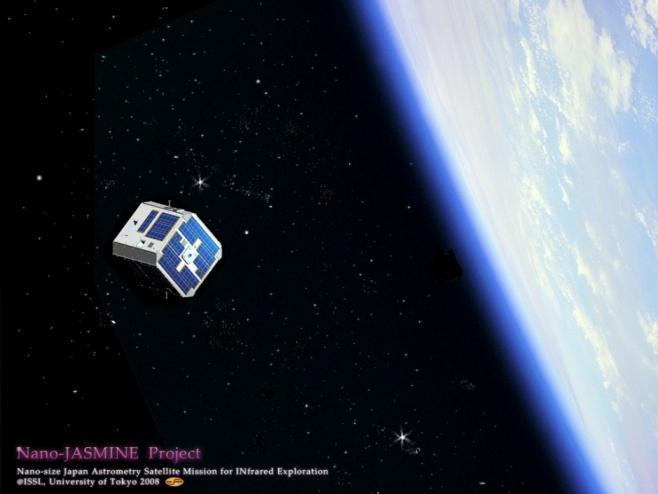
The Japanese project JASMINE is the third astrometric project in history (GAIA is the second) and includes the launch of 3 telescopes in 2017, 2020 and after 2020 to clarify the distance to astronomical objects and also plot the stars on the map.
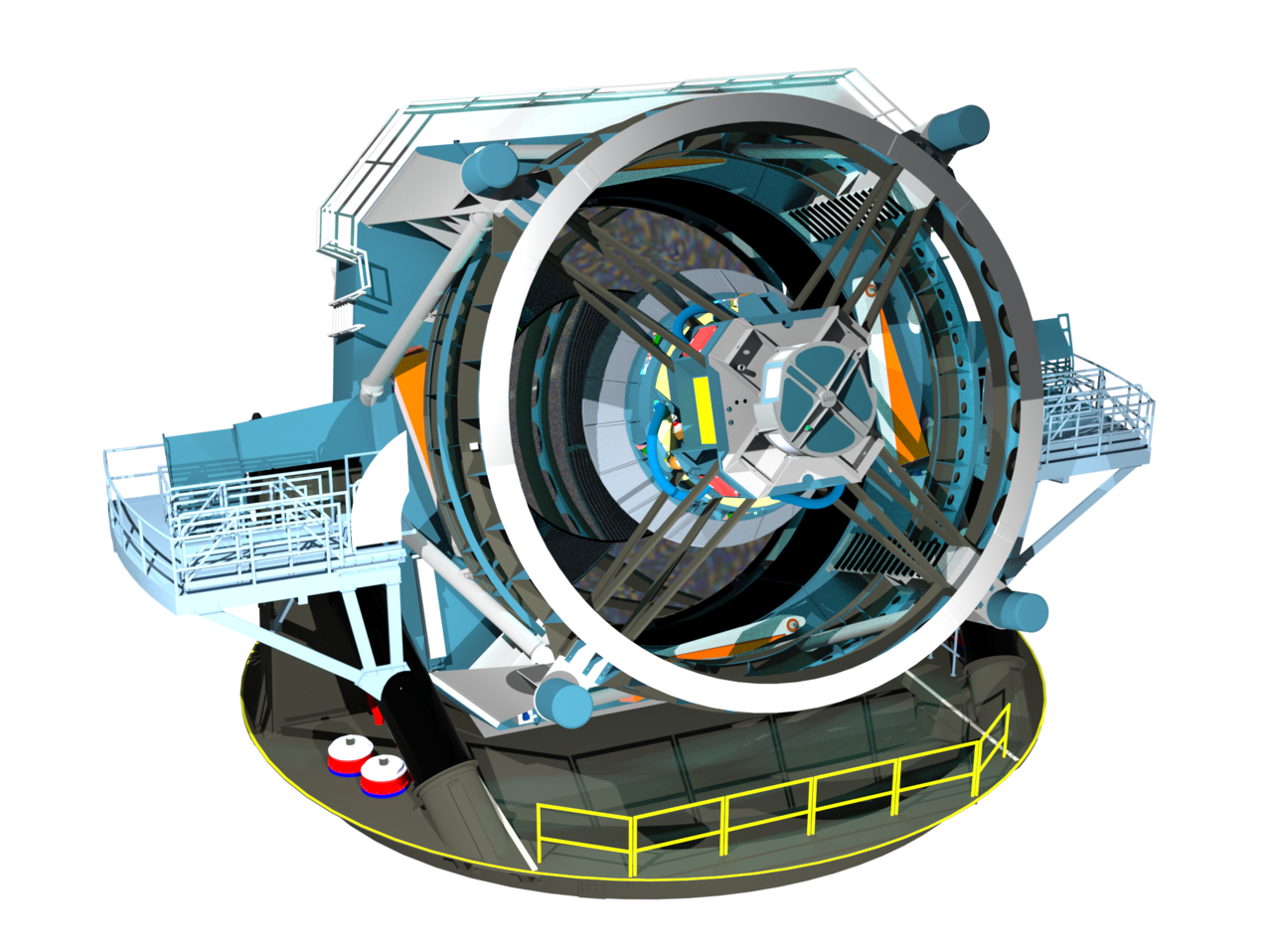
The LSST ground-based telescope will be used to map the Milky Way and compile the latest interactive sky map. It will start around 2022.
more
Today we only have such a star map from Google .
Alien search
If the extraterrestrial civilization in our galaxy invented the radio, then we will ever find it.
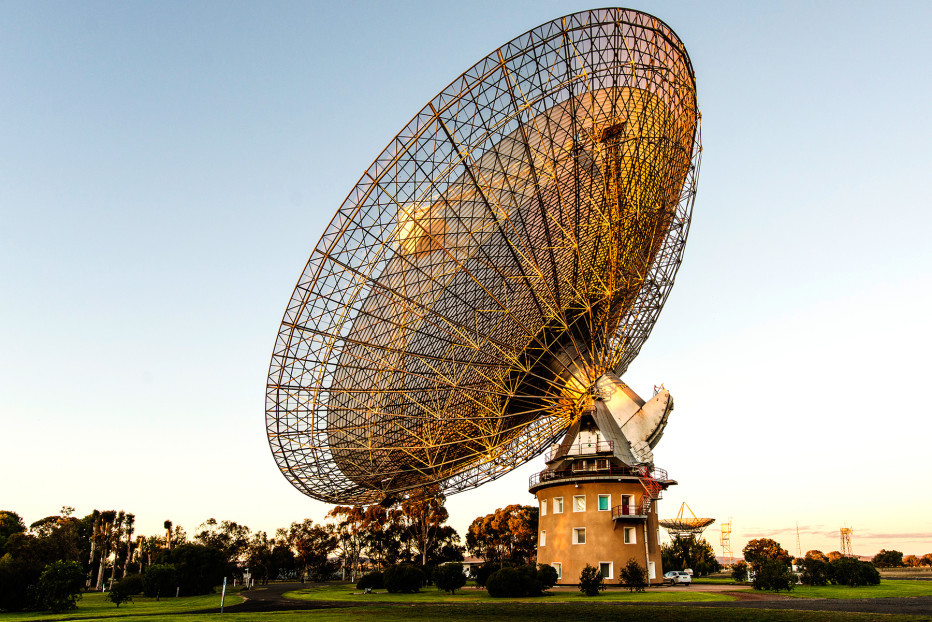
Russian billionaire and the creator of mail.ru, Yuri Milner, invested $ 100 million in 2015 in a new project to search for extraterrestrial civilizations. The search will be carried out on the current equipment.
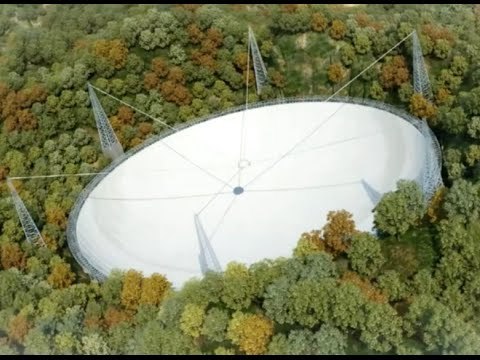
China is building the world's largest radio telescope FAST with an area of 30 football fields, and even evicted the inhabitants of this area to build it. Radio telescopes solve scientific problems, but the most interesting way to use them is to detect the radio signals of intelligent life. The telescope was completed in 2016 and the first studies will be conducted in September.
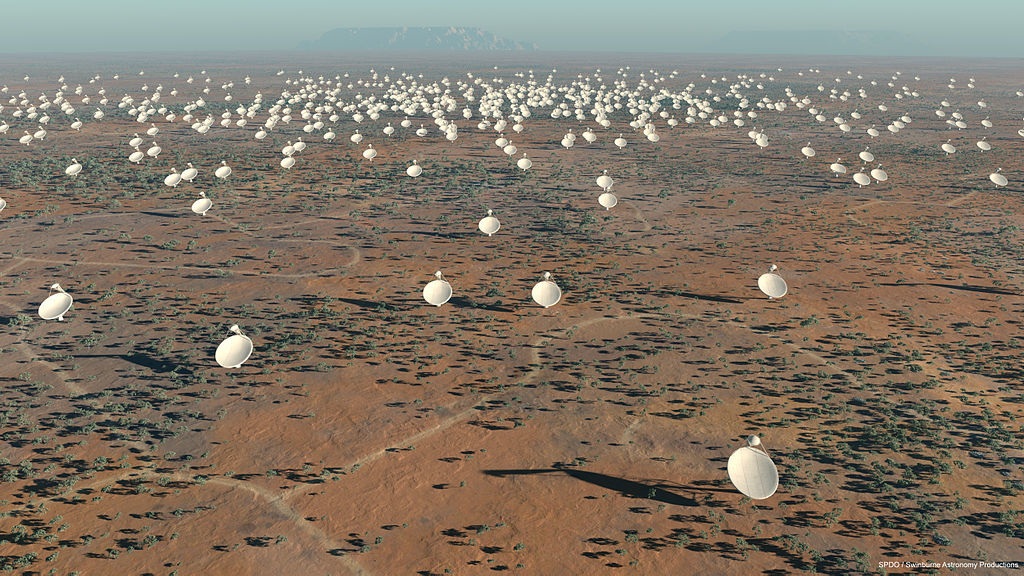
The Square Kilometer Array radio interferometer built in Australia, South Africa and New Zealand will be 50 times more sensitive than any radio telescope and is so sensitive that it can detect the airport radar for tens of light years from the earth. Exit to full capacity is expected in 2024. He will also be able to solve the scientific riddle of where short radio bursts come from and will find many new galaxies.
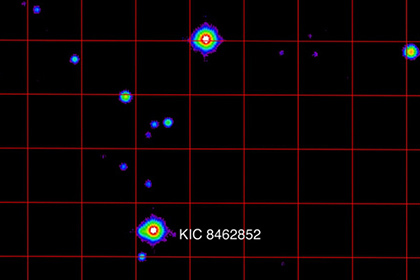
KIC8462852 is the most mysterious star to date. Something huge shields her light. More than jupiter 22 times and this is not another star. Moreover, it shows abnormal brightness fluctuations. Astronomers are very intrigued. ( 1 )
There is a continuing debate about whether to send messages to the stars or just listen. On the one hand, no one will find us if you just listen, on the other hand, the recipients of messages may be hostile. Several messages have already been sent in the 20th century, but now they have not been sent yet.
Asteroid Search
No one seriously engaged in the protection of the planet from asteroids until recently

With increasing concerns about the asteroids after the Chelyabinsk meteorite, NASA's asteroid detection budget increased 10-fold to $ 50 million in 2016.

LSST will not only map the starry sky, but also search for “small objects of the solar system”. Its ability to find asteroids will have to be several times higher than that of modern ground-based and space telescopes.
more
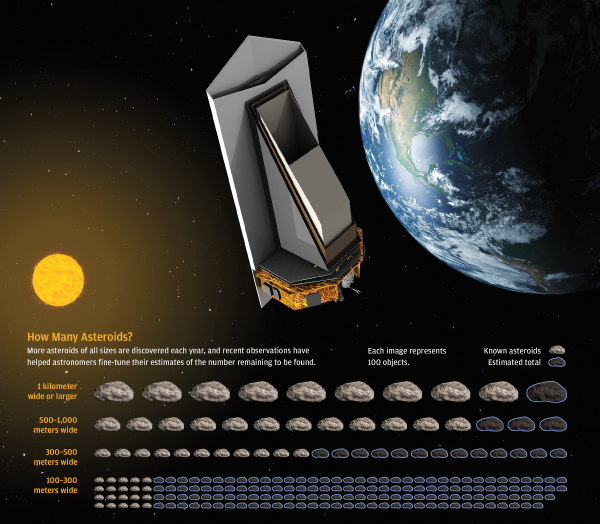
Neocam space infrared telescope is one of 5 contenders for NASA's new Discovery mission. If exactly this mission will be selected for implementation in September 2016 (and it has the greatest support ) the telescope will be launched in 2021. Together with LSST, it will allow Nas to accomplish the task of finding 90% of asteroids more than 140 m.
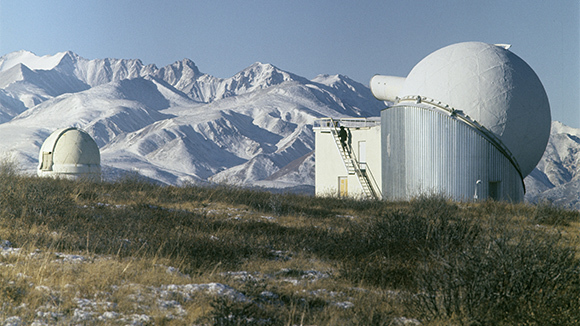
AZT-33 VM, the first telescope in Russia to detect dangerous asteroids, was completed in 2016. It still needs to buy equipment for 500 million rubles, and then it will be able to detect an asteroid the size of a Tungus meteorite a month before the collision with the earth.
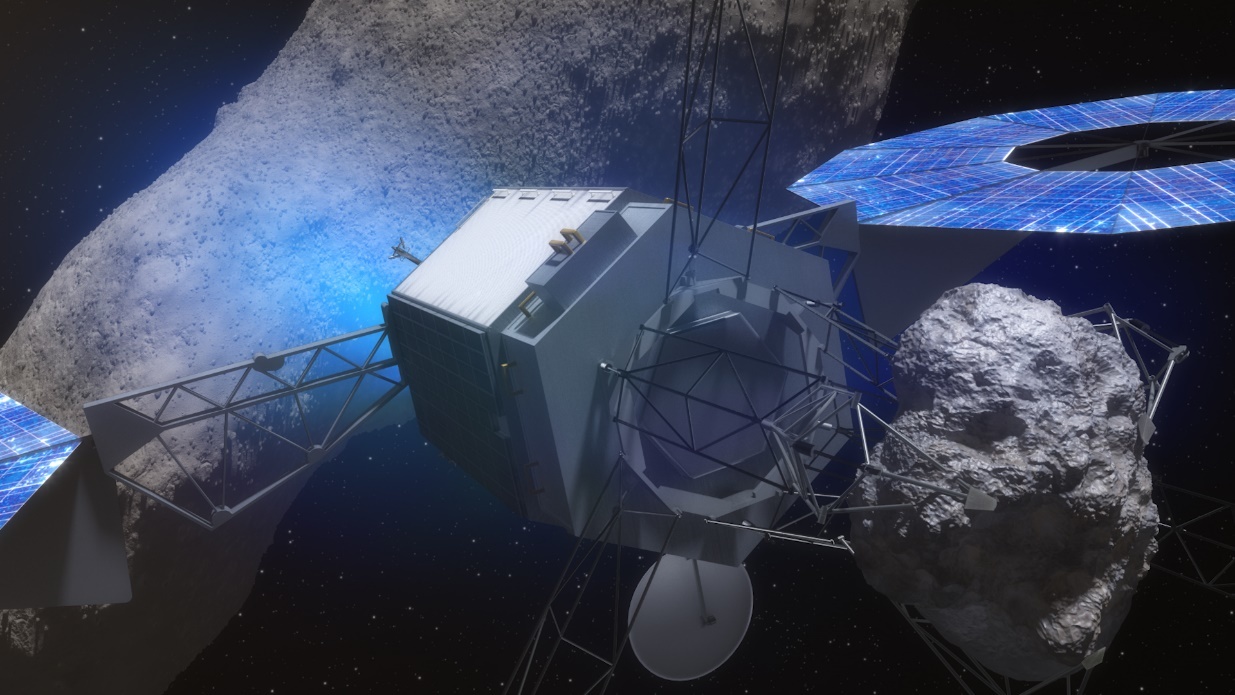
It is useless to watch dangerous asteroids if you cannot change their course. Therefore, NASA and ESA are going to launch the AIDA mission to collide a special probe and asteroid “65803 Didymos” and thus test the possibility of changing the course of the asteroid. The launch is expected in 2020, and a collision in 2022.
more
Astronomy dream projects
Astronomers would very much like to implement these projects, but so far they cannot because of lack of funding, technology or internal unity.
Overwhelmingly large telescope
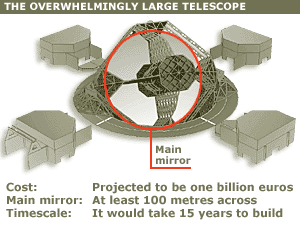
Due to disagreements between astronomers, 3 large telescopes are built instead of one giant 100 meter telescope. Nevertheless, astronomers agree that in the next 30 years a hundred-meter telescope will need to be built.
more
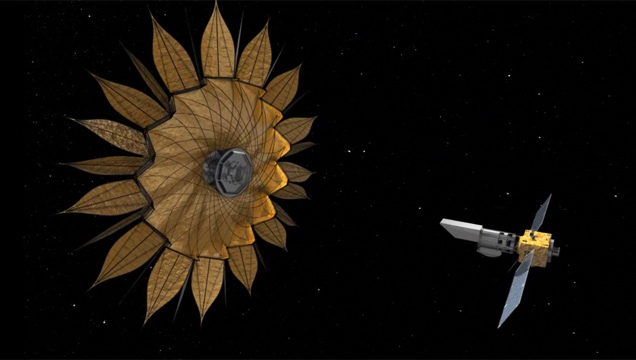
The mission of New Worlds is to block the light of the star to see the exoplanets near it. For this, it is necessary to launch a coronagraph in space in combination with a telescope. The details of the mission are still under discussion, but it will cost at least $ 1 billion.
more
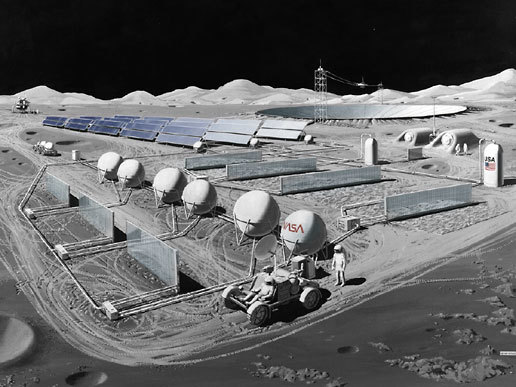
Space telescopes are not large enough, and ground observatories are hampered by the atmosphere. Therefore, astronomers would very much like to build an observatory on the moon where there is no atmosphere and noise (distortions due to terrestrial sources). This would be an ideal place to observe, but it would take decades to implement such a project. Nevertheless, small telescopes are already sent to the moon along with the lunar rovers .
Total:
For such far from practical results of science as astronomy, the number of investments and the number of projects carried out is very large. Most projects exist only to satisfy our curiosity. Most likely we will not find an alien civilization, extraterrestrial life or an asteroid that is really threatening the earth. But we are trying and follow this quite interesting.
Source: https://habr.com/ru/post/396133/
All Articles